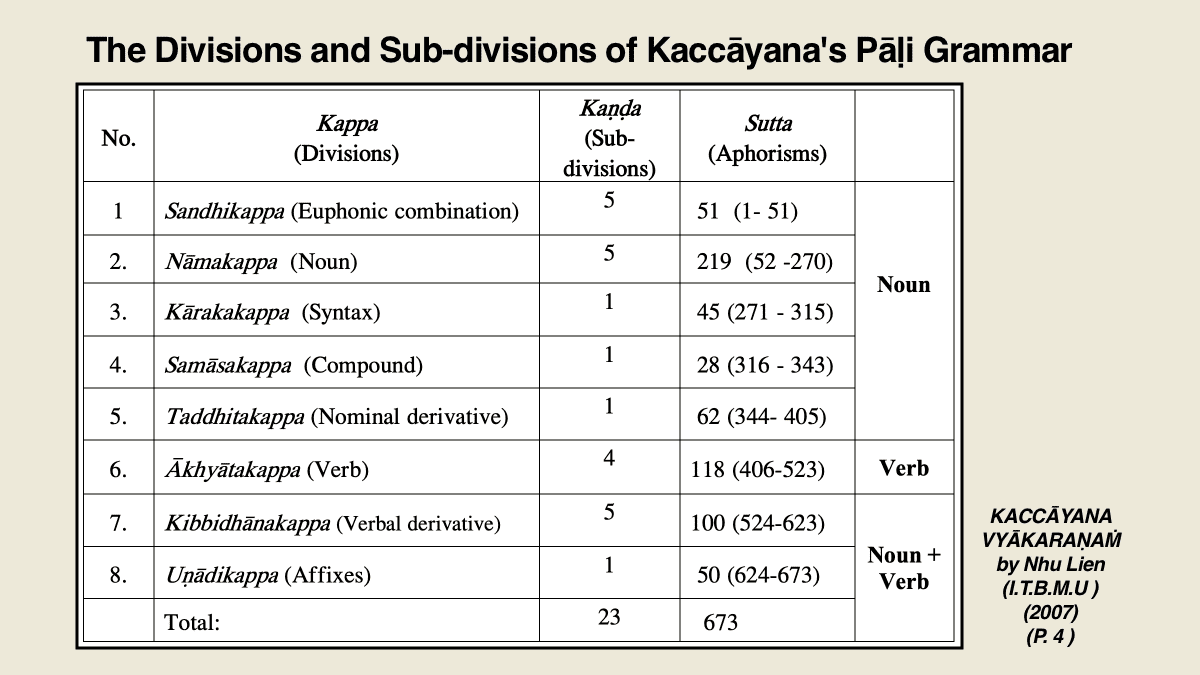(Kaccāyana’s Pāḷi Grammar)
By Ven. Kaccāyana Mahāthera
Department of Pāḷi
International Theravāda Buddhist Missionary University
Yangon, Myanmar
May 25, 2007
- (Chapter I) (SANDHI-KAPPA)1 (Euphonic combination)
- (Chapter II) (NĀMA-KAPPA)2 (Noun)
- (Chapter III) (KĀRAKA-KAPPA) (Syntax)
- (Chapter IV) (SAMĀSA-KAPPA) (Compound)
- (Chapter V) (TADDHITA-KAPPA) (Nominal derivative)
- (Chapter VI) (ĀKHYĀTA-KAPPA) (Verb)
- (Chapter VII) (KIBBIDHĀNA-KAPPA) (Verbal derivative)
- (Chapter VIII) (UṆĀDI-KAPPA) (Affixes)
Read More:
- Kaccāyana Grammar and Saddanīti Grammar
- Kaccayana’s documentation (https://kaccayana.readthedocs.io/en/latest/index.html)
- 𑀲𑀦𑁆𑀥𑀺𑀓𑀧𑁆𑀧 (Sandhikappa) (https://christham.net/)
"sandhiis derived fromsaṃ+dhāmeaning “putting together” and is used to refer to the transformation that results from the joining together of two words (or two parts of a word) for the sake of euphony.”
- Satimā
Footnotes:
- https://dn721804.ca.archive.org/0/items/kaccayana-pali-vyakaran-sandhi-kappa-vol.-1/kaccayana%20pali%20vyakaran%20%28%20sandhi%20kappa%20%29%20Vol.1.pdf ↩︎
- https://ia600500.us.archive.org/3/items/kaccayana-pali-vyakaran-nama-kappa-vol.-2/kaccayana%20pali%20vyakaran%20%28%20nama%20kappa%20%29%20Vol.2.pdf ↩︎
![]()

